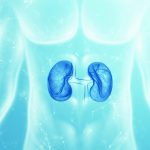Migraine pain can take up to 1 to 2 hours to build up. Migraine pain typically starts out as a dull ache. It can take an hour or two to build into a full-blown headache. Some people can feel an oncoming migraine a day or two before it starts. Because most migraine medicines work best when taken early, it’s a good idea to take medicine as soon as you feel a headache coming on.
Everyone has different migraine triggers. Some common ones are:
- Strong smells, like perfumes and detergents
- Hormonal changes (menstruation, pregnancy, and ovulation)
- Bright or fluorescent lights
- Stress or fatigue
- Too much or too little sleep
- Some medications, like birth control pills
- Weather changes
- Cold triggers like ice cream
- Certain foods
IS THERE ANYTHING I CAN DO TO AVOID A MIGRAINE?
Apart from taking medication, there are a few things that you can do to help reduce the chances of having a migraine.
- Keep a migraine diary and avoid things that trigger your migraine. When you get a migraine, write down what you were doing, foods you were eating and what the environment was like (e.g. bright lights) before the headache started. This will assist you to identify anything that might trigger your migraines and help you to avoid them in the future.
- Try to control your stress levels. If you need to, get some advice about relaxation techniques.
- Exercise regularly.
- Eat a healthy diet and avoid too much junk food, salt, alcohol and caffeine.
- Do not miss meals.
- Try to get enough sleep and go to bed and rise at the same time each day.
MIGRAINE MYTHS AND FACTS
Do you know the painful truth about migraine headaches? Test your knowledge about migraines with this quiz.
True or False?
- If you don’t see flashing lights, or an “aura,” it isn’t a migraine.
FALSE: “Aura” is a broad term for how a migraine affects your senses before or during a headache. Not everybody experiences this. Those who do might see flashing lights, spots, or wavy or jagged lines. Auras can also make your ears ring, change the way things taste, smell, feel or just give you an overall funny feeling. They usually last from 15 minutes to an hour.
- You typically feel a migraine on only one side of your head.
TRUE: Unlike most other headaches, migraines usually strike on one side of your head. But they don’t always stay still. The pain can move from one side of the head to the other. Most people describe the pain as throbbing or pounding. They can last 4 hours or longer.
- Women are more likely to get migraines.
TRUE: About 3 of every 4 people who get migraines are women. In fact, the only time migraines are more common in men is when they’re young – before the onset of puberty.
- You are likely to have fewer migraines as you get older, and they won’t hurt as much.
TRUE: For most people, migraines peak between 35 and 40, then taper off and weaken after that. This may not be the case if you’re a woman going through perimenopause. If hormones are a trigger, you could have more headaches during this time.
- If a family member has migraines, you’re more likely to get them.
TRUE: There’s a good chance you can blame your family. About 4 out of 5 people with migraines have a relative who gets them too. If one of your parents have them, you have a 50% chance of getting them. If both parents have them, you have a 75% chance.
Sources and References consulted:
iNova Pharmaceuticals (Pty) Ltd: Patient education material
www.healthline.com/health/headache/types-of-headaches
https://www.webmd.com/migraines-headaches/migraines-headaches-basics












